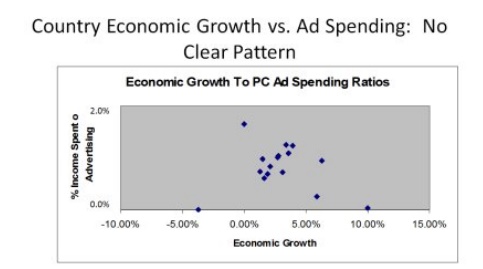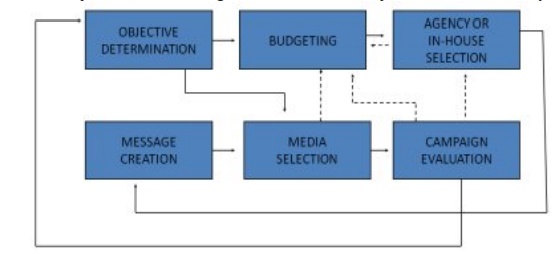Chapter: Business Science : International Business Management : International Trade and Investment
Promotion of Global Business
PROMOTION GLOBAL BUSINESS:
Promotional tools.
Numerous tools can be used to influence consumer purchases:.
Advertising—in
or on newspapers, radio, television, billboards, busses, taxis, or the
Internet.
Price
promotions—products are being made available temporarily as at a lower price,
or some premium (e.g., toothbrush with a package of toothpaste) is being
offered for free.
Sponsorships
Point-of-purchase—the
manufacturer pays for extra display space in the store or puts a coupon right
by the product
Other
method of getting the consumer’s attention—all the Gap stores in France may
benefit from the prominence of the new store located on the Champs-Elysees

Promotional objectives.
Promotional objectives involve the question of what the firm hopes to achieve with a campaign - “increasing
profits” is too vague an objective, since this has to be achieved through some
intermediate outcome (such as increasing market share, which in turn is
achieved by some change in consumers which cause them to buy more). Some common
objectives that firms may hold:
Awareness:
Many French consumers do not know that the Gap even
exists, so they cannot decide to go shopping there. This objective is often
achieved through advertising, but could also be achieved through favorable
point-of-purchase displays. Note that since advertising and promotional stimuli
are often afforded very little attention by consumers, potential buyers may
have to be exposed to the promotional stimulus numerous times before it
“registers.”
Trial:
Even when consumers know that a product exists and could possibly
satisfy some of their desires, it may take a while before they get around to
trying the product especially when there are so many other products that
compete for their attention and wallets. Thus, the next step is often to try
get consumer to try the product at least once, with the hope that they will
make repeat purchases. Coupons are often an effective way of achieving trial,
but these are illegal in some countries and in some others, the infrastructure to
readily accept coupons (e.g., clearing houses) does not exist. Continued
advertising and point-of-purchase displays may be effective. Although Coca Cola
is widely known in China, a large part of the population has not yet tried the
product
Attitude toward the product:
A high percentage of people in the U.S. and Europe has tried Coca Cola,
so a more reasonable objective is to get people to believe positive things
about the product - e.g., that it has a superior taste and is better than
generics or store brands. This is often achieved through advertising
Temporary sales increases:
For mature products and categories, attitudes may be fairly well
established and not subject to cost-effective change. Thus, it may be more
useful to work on getting temporary increases in sales (which are likely to go
away the incentives are removed).
In the U.S. and Japan, for example, fast food restaurants may run
temporary price promotions to get people to eat out more or switch from
competitors, but when these promotions end, sales are likely to move back down
again (in developing countries, in contrast, trial may be a more appropriate
objective in this category)

Constraints on Global Communications Strategies.
Although firms that seek standardized positions
may seek globally unified campaigns, there are several constraints:
Language barriers:
The
advertising will have to be translated, not just into the generic language
category (e.g., Portuguese) but also into the specific version spoken in the region
(e.g., Brazilian Portuguese). (Occasionally, foreign language ads are
deliberately run to add mystique to a product, but this is the exception rather
than the rule).
Cultural barriers:
Subtle cultural differences may make an ad that tested well in one
country unsuitable in another. e.g., an ad that featured a man walking in to
join his wife in the bathroom was considered an inappropriate invasion in
Japan. Symbolism often differs between cultures, and humor, which is based on
the contrast to people’s experiences, tends not to travel well.
Values also tend to differ between cultures in the U.S. and Australia,
excelling above the group is often desirable, while in Japan, “The nail that
sticks out gets hammered down.” In the U.S., “The early bird gets the worm”
while in China “The first bird in the flock gets shot down.”
Local attitudes toward
advertising:
People in some countries are more receptive to advertising than others.
While advertising is accepted as a fact of life in the U.S., some Europeans
find it too crass and commercial.
Media infrastructure:
Cable TV is not well developed in some countries and regions, and not
all media in all countries accept advertising. Consumer media habits also
differ dramatically; newspapers appear to have a higher reach than television
and radio in parts of Latin America.
Advertising regulations: 3
Countries
often have arbitrary rules on what can be advertised and what can be claimed.
Comparative advertising is banned almost everywhere outside the U.S. Holland requires
that a toothbrush be displayed in advertisements for sweets, and some countries
require that advertising to be shown there be produced in the country.

Some cultural dimensions:
Directness vs. indirectness: U.S.
advertising tends to emphasize directly why someone would benefit from buying the product. This, however, is
considered too pushy for Japanese consumers, where it is felt to be arrogant of
the seller to presume to know what the consumer would like.
Comparison: Comparative advertising is banned
in most countries and would probably be
very counterproductive, as an insulting instance of confrontation and bragging,
in Asia even if it were allowed. In the U.S., comparison advertising has proven
somewhat effective (although its implementation is tricky) as a way to persuade
consumers what to buy.
Humor: Although humor is a relatively
universal phenomenon, what is considered
funny between countries differs greatly, so pre-testing is essential.
Gender roles. A study found that women in
U.S. advertising tended to be shown in more
traditional roles in the U.S. than in Europe or Australia. On the other hand,
some countries are even more traditional—e.g., a Japanese ad that claimed a
camera to be “so simple that even a woman can use it” was not found to be
unusually insulting.
Explicitness: Europeans tend to allow for
considerably more explicit advertisements,
often with sexual overtones, than Americans.
Sophistication. Europeans, particularly the
French, demand considerably more sophistication
than Americans who may react more favorably to emotional appeals - e.g., an ad
showing a mentally retarded young man succeeding in a job at McDonald’s was
very favorably received in the U.S. but was booed at the Cannes film festival
in France.
Popular vs. traditional culture: U.S. ads
tend to employ contemporary, popular culture, often including current music while those in more traditional
cultures tend to refer more to classical culture.
Information content vs. fluff: American
ads contain a great deal of “puffery,” which was found to be very ineffective in Eastern European countries
because it resembled communist propaganda too much. The Eastern European
consumers instead wanted hard, cold facts.
Advertising standardization: Issues
surrounding advertising standardization tend to parallel issues surrounding product and positioning standardization. On the
plus side, economies of scale are achieved, a consistent image can be
established across markets, creative talent can be utilized across markets, and
good ideas can be transplanted from one market to others. On the down side,
cultural differences, peculiar country regulations, and differences in product
life cycle stages make this approach difficult. Further, local advertising
professionals may resist campaigns imposed from the outside. sometimes with
good reasons and sometimes merely to preserve their own creative autonomy.

Legal issues. Countries differ in their
regulations of advertising, and some products are banned from advertising on certain media (large supermarket chains are
not allowed to advertise on TV in France, for example). Other forms of
promotion may also be banned or regulated. In some European countries, for
example, it is illegal to price discriminate between consumers, and thus
coupons are banned and in some, it is illegal to offer products on sale outside
a very narrow seasonal and percentage range.
Related Topics